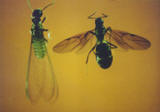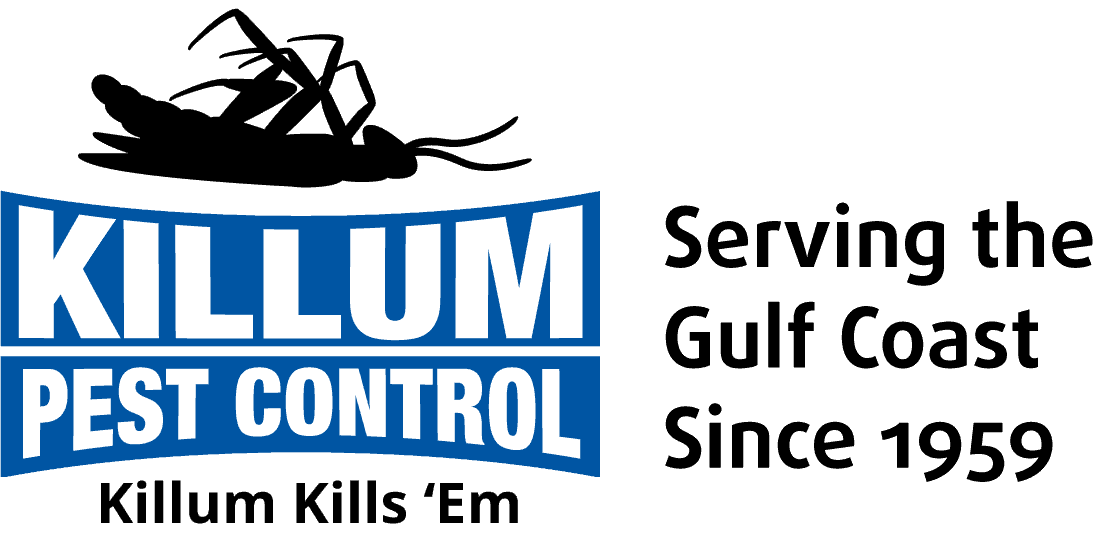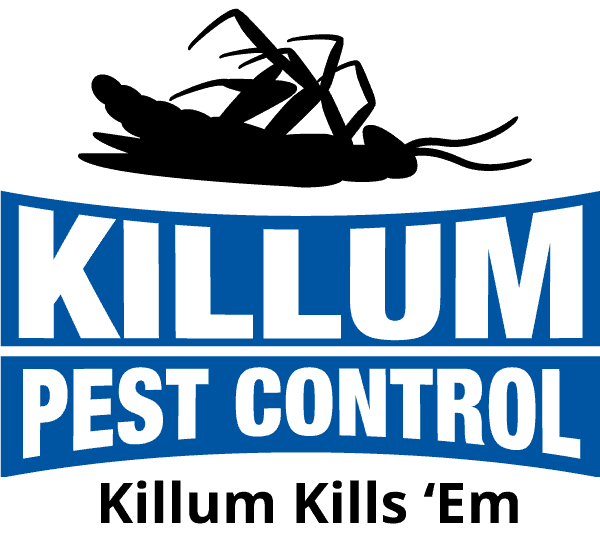Termite Season
Termite season occurs when swarming begins in late February and early March. To a limited extent termites regulate temperature conditions to suit themselves. Therefore, some burrows will be situated above ground and some situated below the ground. Typically the winged reproductives may wait three months or more for the correct atmospheric conditions. When the humidity and temperature are adequate, the reproductives emerge from the tunnels that the workers and nymphs have built.
What is a Termite
A termite is an insect with six legs and a three segmented body, consisting of a head, thorax, and abdomen. If you were to break open a piece of infested wood, you would see what appears to be maggots with legs. Termites are sensitive to touch, taste, odor, and pressure. See pictures below.
Termite Nesting
Termites can be categorized into two groups by their nesting sites. The earth-dwelling termites that make tunnels in the ground or build tubes above the earth are called subterranean termites. The second group, the wood-dwelling termites that have no contact with the earth, are called drywood termites. In the United States termites are most abundant in the South and Southwest. In fact, the Gulf Coast is commonly known as the “termite belt”. Termites are so destructive because they are long lived, their colonies are self-repeating, and they have a constant supply of food. Termites are social insects and by creating tubes deep into the earth they protect themselves from extreme environmental conditions.
How Termites Infest Structures
Since termites try to avoid light and open air spaces, they keep themselves out of sight so you may seldom actually see a termite in your home. The tunnels give them the ability to go virtually undetected while reaching their food source, wood. Therefore, destruction can be “undetected” as well. Termites destroy over $750,000,000 in property annually. Nationally, that equates to over 2 million homes being damaged by termites. The following are a few ways that termites infest buildings:
- Wood to ground contact
- Foundation cracks
- Debris beneath the house
- Uneven drainage
- Joints between porches and foundations
- Pipes and the insulation around them
Identification
Termites exist primarily in three forms: winged reproductives, soldiers, and workers. The pictures show these three forms.
 Winged Reproductive
Winged Reproductive
 Soldier
Soldier
 Worker
Worker
The differences between termites and ants can be observed visually. While similar at a glance, subterranean termite swarmers (left) differ from ant swarmers (right) in that they are ½ inch long, have thick waists and are yellowish-brown in color

 Termite (left) vs. Ant (right)
Termite (left) vs. Ant (right)
 Mud Tubes
Mud Tubes
Being sensitive to temperature and light, termites like to insulate themselves from their surroundings by building mud tubes to travel from ground to wood.
Because termites like to eat the paper surface of sheetrock, their trails, known as “pin holes” can often be seen on the outer surface of walls.
 Pin Holes
Pin Holes
 Swarming Reproductives
Swarming Reproductives
Treatment
There are two primary categories of termite treatment. The traditional approach involves the application of chemical termiticide to the soil to create a continuous barrier in the soil. The newest approach consists of the Sentricon Termite Colony Elimination System.
Prevention
The best management of subterranean termites is prevention. The best time to provide protection against termites is during the planning and construction of a building. Prevention should include:
- Removal of all stumps, roots, wood, and similar materials from the building site before construction is begun.
- Removal of all form boards and grade stakes used in construction.
- There should be no contact between the building woodwork and the soil or fill. Exterior woodwork should be located a minimum of 6 inches above ground and beams in crawl spaces at least 18 inches above ground to provide ample space to make future inspections.
- Ventilation openings in foundations should be designed to prevent dead air pockets and of sufficient size to assure frequent changes of air at least 2 sq. ft. to 25 running feet of outside foundation wall. This helps keep the ground dry and unfavorable for termites.
- Thorough annual inspections should be conducted to discover evidence of termite activity such as mud tubes on foundation surfaces, pinholes on sheetrock surfaces, discarded wings or adult termites.
- Any wood that contacts the soil, such as fence posts, poles and general foundation structures, should be commercially pressure treated.





